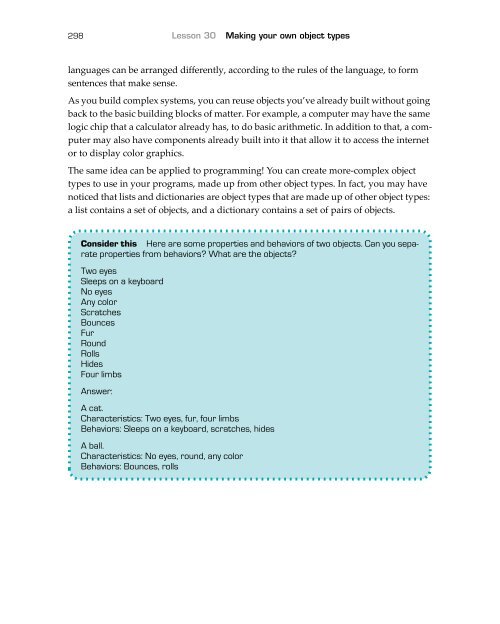SampleCh30
You also want an ePaper? Increase the reach of your titles
YUMPU automatically turns print PDFs into web optimized ePapers that Google loves.
298 Lesson 30 Making your own object types<br />
languages can be arranged differently, according to the rules of the language, to form<br />
sentences that make sense.<br />
As you build complex systems, you can reuse objects you’ve already built without going<br />
back to the basic building blocks of matter. For example, a computer may have the same<br />
logic chip that a calculator already has, to do basic arithmetic. In addition to that, a computer<br />
may also have components already built into it that allow it to access the internet<br />
or to display color graphics.<br />
The same idea can be applied to programming! You can create more-complex object<br />
types to use in your programs, made up from other object types. In fact, you may have<br />
noticed that lists and dictionaries are object types that are made up of other object types:<br />
a list contains a set of objects, and a dictionary contains a set of pairs of objects.<br />
Consider this Here are some properties and behaviors of two objects. Can you separate<br />
properties from behaviors? What are the objects?<br />
Two eyes<br />
Sleeps on a keyboard<br />
No eyes<br />
Any color<br />
Scratches<br />
Bounces<br />
Fur<br />
Round<br />
Rolls<br />
Hides<br />
Four limbs<br />
Answer:<br />
A cat.<br />
Characteristics: Two eyes, fur, four limbs<br />
Behaviors: Sleeps on a keyboard, scratches, hides<br />
A ball.<br />
Characteristics: No eyes, round, any color<br />
Behaviors: Bounces, rolls



